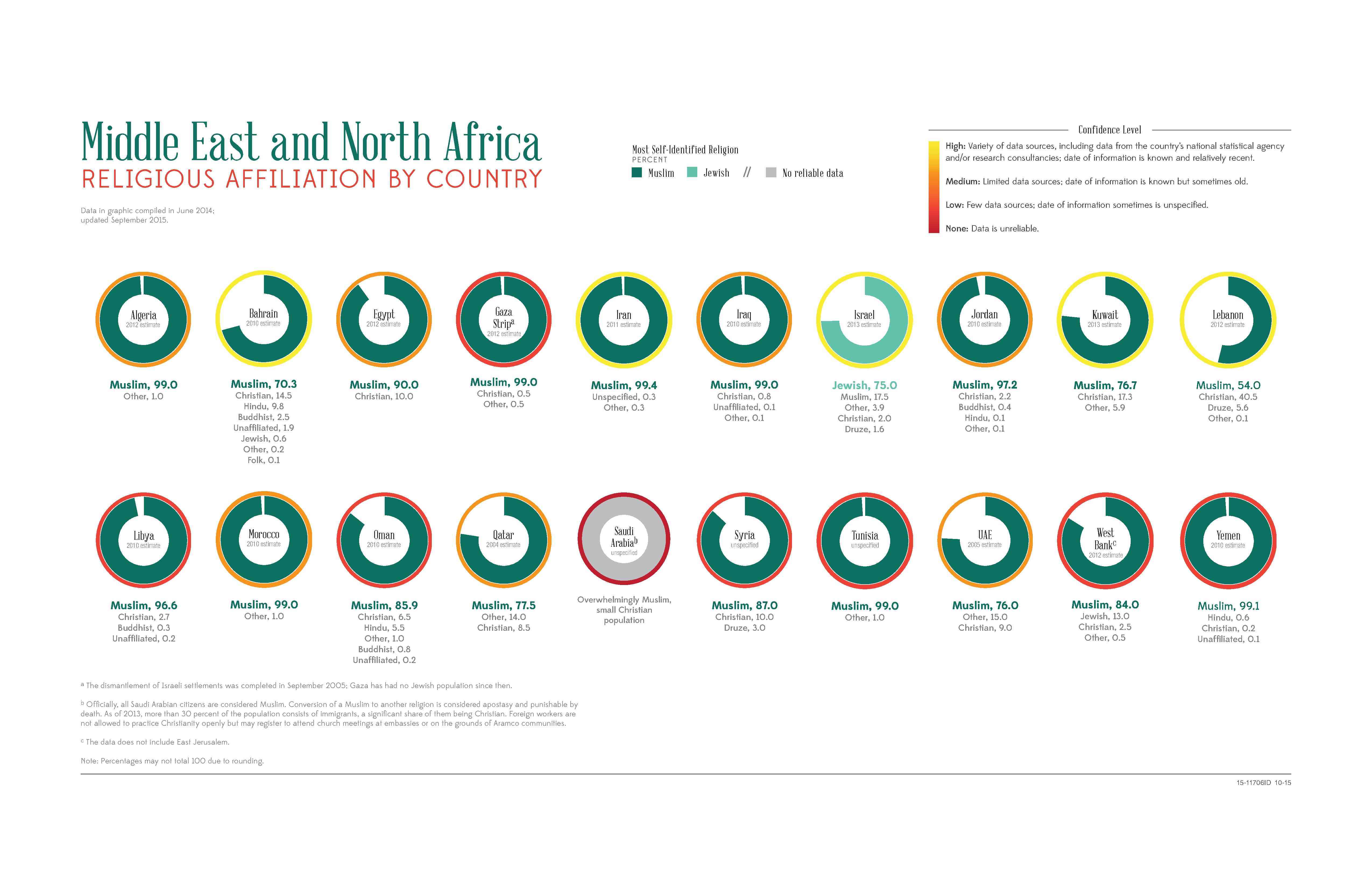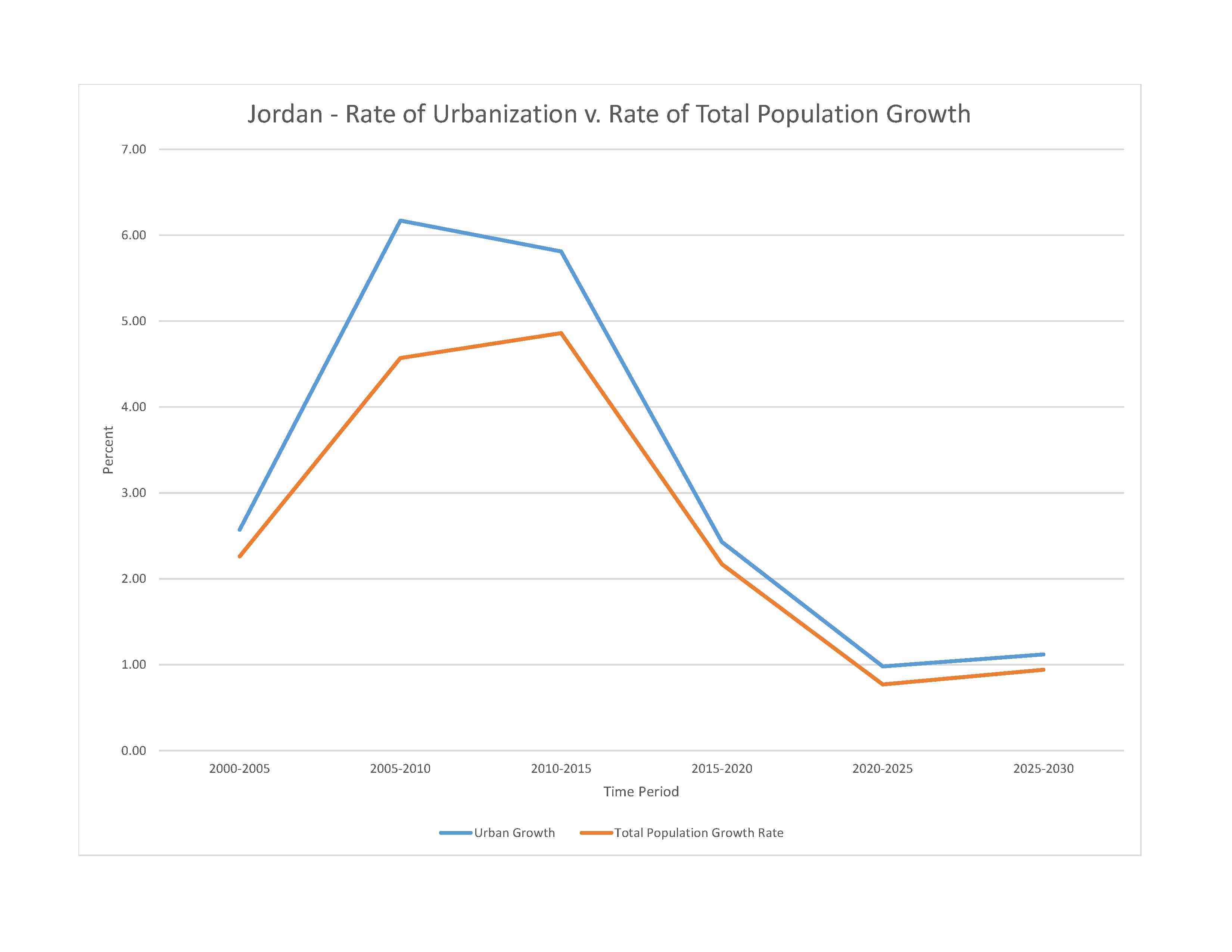
11,086,716 (2023 est.)
note: increased estimate reflects revised assumptions about the net migration rate due to the increased flow of Syrian refugees
noun: Jordanian(s)
adjective: Jordanian
Jordanian 69.3%, Syrian 13.3%, Palestinian 6.7%, Egyptian 6.7%, Iraqi 1.4%, other 2.6% (2015 est.)
note: data represent population by self-identified nationality in national census
Arabic (official), English (widely understood among upper and middle classes)
major-language sample(s):
كتاب حقائق العالم، المصدر الذي لا يمكن الاستغناء عنه للمعلومات الأساسية (Arabic)
The World Factbook, the indispensable source for basic information.
Arabic audio sample:
Muslim 97.1% (official; predominantly Sunni), Christian 2.1% (majority Greek Orthodox, but some Greek and Roman Catholics, Syrian Orthodox, Coptic Orthodox, Armenian Orthodox, and Protestant denominations), Buddhist 0.4%, Hindu 0.1%, Jewish 
0-14 years: 31.42% (male 1,788,882/female 1,694,417)
15-64 years: 64.53% (male 3,802,074/female 3,352,680)
65 years and over: 4.05% (2023 est.) (male 218,218/female 230,445)
total dependency ratio: 57.1
youth dependency ratio: 51.2
elderly dependency ratio: 5.8
potential support ratio: 17.1 (2021 est.)
total: 24.6 years (2023 est.)
male: 25.1 years
female: 24.1 years
0.79% (2023 est.)
22.4 births/1,000 population (2023 est.)
3.5 deaths/1,000 population (2023 est.)
-11 migrant(s)/1,000 population (2023 est.)
population heavily concentrated in the west, and particularly the northwest, in and around the capital of Amman; a sizeable, but smaller population is located in the southwest along the shore of the Gulf of Aqaba
urban population: 92% of total population (2023)
rate of urbanization: 0.98% annual rate of change (2020-25 est.)

2.232 million AMMAN (capital) (2023)
at birth: 1.06 male(s)/female
0-14 years: 1.06 male(s)/female
15-64 years: 1.13 male(s)/female
65 years and over: 0.95 male(s)/female
total population: 1.1 male(s)/female (2023 est.)
24.6 years (2017/18 est.)
note: data represents median age at first birth among women 25-49
41 deaths/100,000 live births (2020 est.)
total: 13.6 deaths/1,000 live births (2023 est.)
male: 14.7 deaths/1,000 live births
female: 12.4 deaths/1,000 live births
total population: 76.3 years (2023 est.)
male: 74.8 years
female: 77.8 years
2.91 children born/woman (2023 est.)
1.41 (2023 est.)
51.8% (2017/18)
improved: urban: 99.2% of population
rural: 97.9% of population
total: 99.1% of population
unimproved: urban: 0.8% of population
rural: 2.1% of population
total: 0.9% of population (2020 est.)
7.5% of GDP (2020)
2.66 physicians/1,000 population (2019)
1.5 beds/1,000 population (2017)
improved: urban: 98.8% of population
rural: 97.8% of population
total: 98.7% of population
unimproved: urban: 1.2% of population
rural: 2.2% of population
total: 1.3% of population (2020 est.)
35.5% (2016)
total: 0.25 liters of pure alcohol (2019 est.)
beer: 0.06 liters of pure alcohol (2019 est.)
wine: 0 liters of pure alcohol (2019 est.)
spirits: 0.19 liters of pure alcohol (2019 est.)
other alcohols: 0 liters of pure alcohol (2019 est.)
total: 34.8% (2020 est.)
male: 56.8% (2020 est.)
female: 12.8% (2020 est.)
2.7% (2019)
55.6% (2023 est.)
women married by age 15: 1.5%
women married by age 18: 9.7%
men married by age 18: 0.1% (2018 est.)
3.2% of GDP (2021 est.)
definition: age 15 and over can read and write
total population: 98.4%
male: 98.7%
female: 98.4% (2021)
total: 11 years
male: 10 years
female: 11 years (2020)
NOTE: The information regarding Jordan on this page is re-published from the 2024 World Fact Book of the United States Central Intelligence Agency and other sources. No claims are made regarding the accuracy of Jordan 2024 information contained here. All suggestions for corrections of any errors about Jordan 2024 should be addressed to the CIA or the source cited on each page.
This page was last modified 04 May 24, Copyright © 2024 ITA all rights reserved.